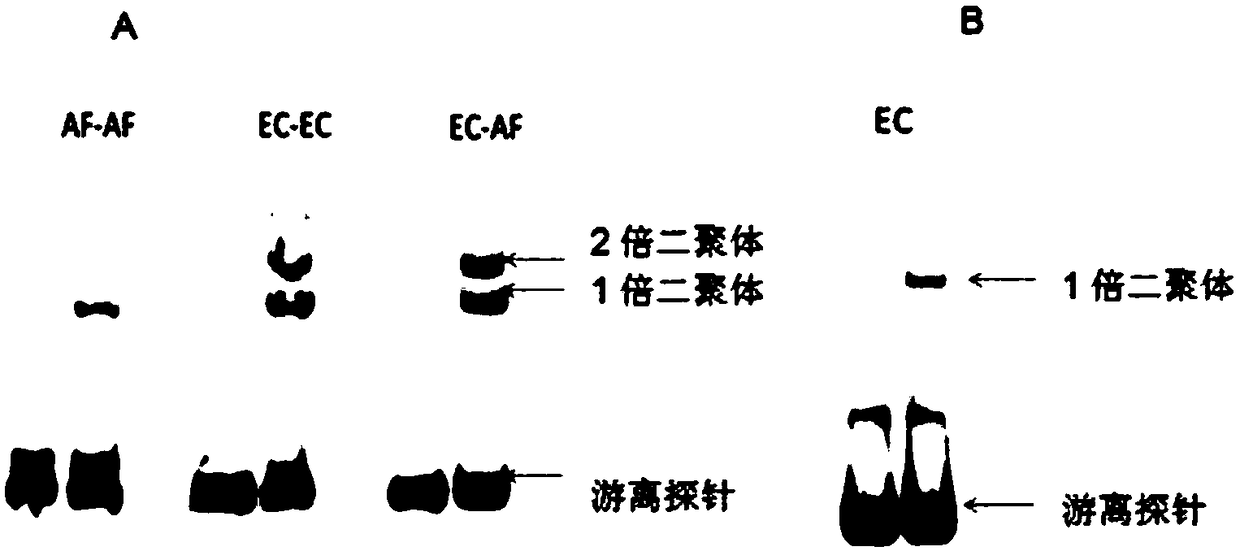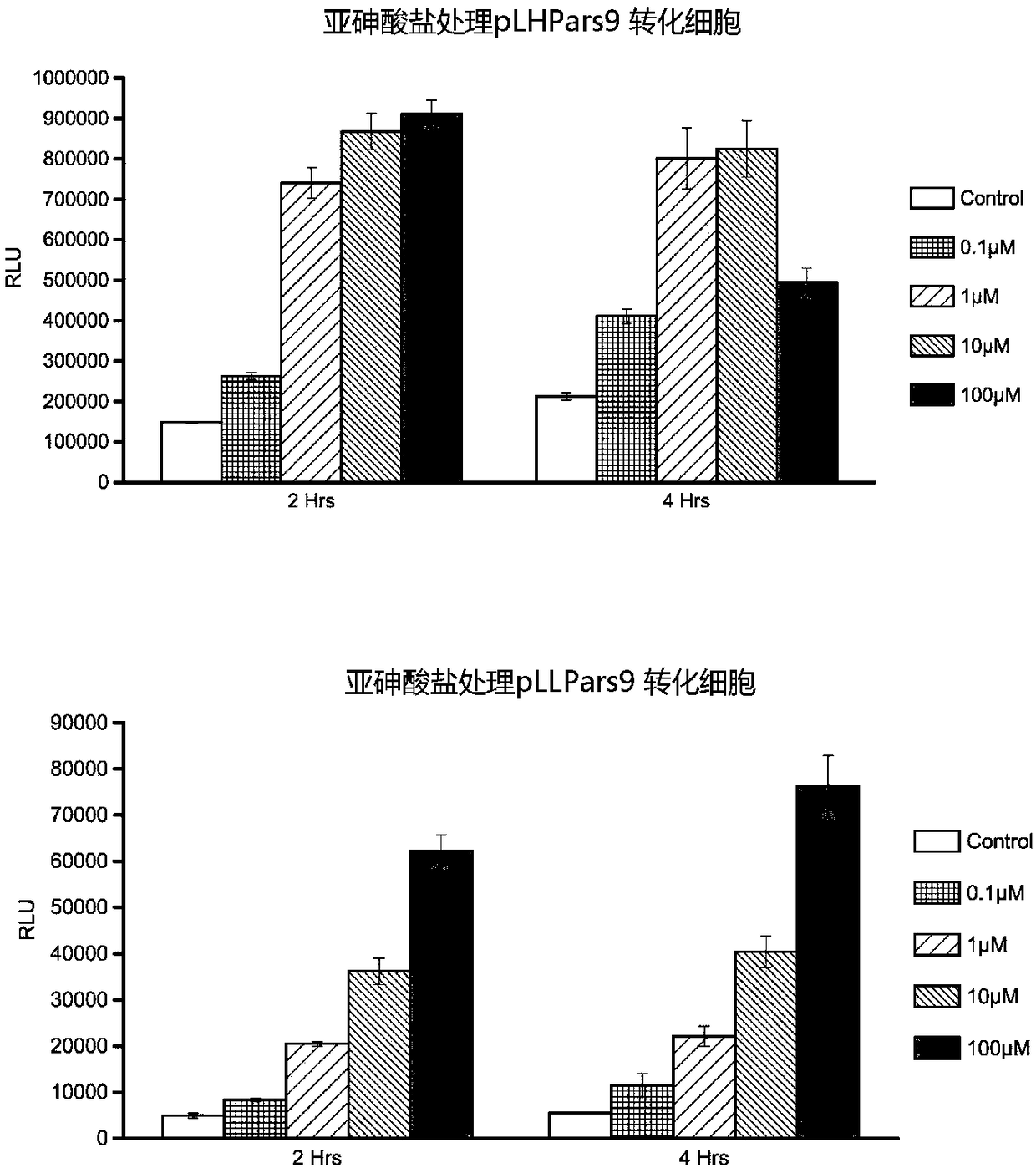Arsenite inhibitory factor reporter gene plasmids, construction method and application thereof
A technology of arsenite and inhibitors, which is applied in the fields of genetic engineering and molecular biology, can solve problems such as high background and achieve good inductive effects
- Summary
- Abstract
- Description
- Claims
- Application Information
AI Technical Summary
Problems solved by technology
Method used
Image
Examples
Embodiment 1
[0031] 1. Plasmid construction
[0032] A series of high copy number plasmids derived from pGFPuv (Clontech) containing the pUC origin of replication (ColE1). The firefly luciferase gene was used to replace the GFPuv gene at the XbaI and EcoRI sites, and the lac promoter sequence was eliminated by digestion with HindIII and PvuII. A fragment containing the 91 bp promoter region of the R773ArsR operon was synthesized, and the luciferase gene upstream of HindIII and XbaI was cloned to obtain the pLHPars4 vector. A fragment containing a 91bp promoter region and a fragment encoding amino acids 1-102 of ArsR were synthesized and cloned to obtain pLHPars5. Fragments containing the ArsR binding sequence in Escherichia coli chromosome (EC-BS) or the binding sequence in acidic Thiobacillus ferrooxidans (AF-BS) were synthesized and inserted between the HindIII and PvuII sites of pLHPars5 , were cloned to obtain pLHPars7 and pLHPars10. In addition, fragments of EC-BS / AF-BS, two parts ...
experiment example 1
[0039] Experimental example 1 using high copy number plasmids to achieve high levels of luciferase gene expression
[0040] To assess the arsenite-inducibility of the luciferase gene, transformed cells were treated with 10 μM sodium arsenite for 2 hr; as figure 1 As shown, no significant arsenite-mediated induction of luciferase activity was observed. Escherichia coli chromosome ArsR can be used as a trans-regulator for combining with Escherichia coli chromosome and plasmid R773 operon. Thus, a simple explanation for the absence of induction is that the free ArsR predominates compared to the ArsR-bound promoter / operator sequence due to the high copy number plasmid in cells providing high levels of luciferase expression. Addition of arsenite, which removes ArsR from the promoter / operator, did not alter luciferase activity significantly compared to the unbound form, due to the very limited number of promoters / operons bound to ArsR .
[0041] Experimental Example 2 The co-expr...
experiment example 3
[0043] Experimental Example 3 Adding the ArsR binding sequence in front of the Ars operon
[0044] A common approach in mammalian systems is to genetically insert an additional copy of the cis-acting element in front of the promoter to better measure the inducibility of the reporter gene. This approach has been used to reduce the basal background of reporter gene activity during arsenite biosensor construction by inserting an extra copy of the E. coli ArsR binding sequence between the ArsR gene and the reporter gene. It showed slightly lower background compared to the control reporter without the addition of the additional ArsR binding sequence. In the present invention, an Escherichia coli ArsR binding sequence (EC-BS) or acidic Thiobacillus ferrooxidans ArsR binding sequence (AF-BS) is constructed in front of the R773ArsR promoter / operon of pLHPars5 to obtain reporter gene vectors pLHPars7 and pLHPars10( figure 1 ). Treatment of DH5α-transformed cells with 10 μM arsenite ...
PUM
 Login to View More
Login to View More Abstract
Description
Claims
Application Information
 Login to View More
Login to View More - R&D
- Intellectual Property
- Life Sciences
- Materials
- Tech Scout
- Unparalleled Data Quality
- Higher Quality Content
- 60% Fewer Hallucinations
Browse by: Latest US Patents, China's latest patents, Technical Efficacy Thesaurus, Application Domain, Technology Topic, Popular Technical Reports.
© 2025 PatSnap. All rights reserved.Legal|Privacy policy|Modern Slavery Act Transparency Statement|Sitemap|About US| Contact US: help@patsnap.com



